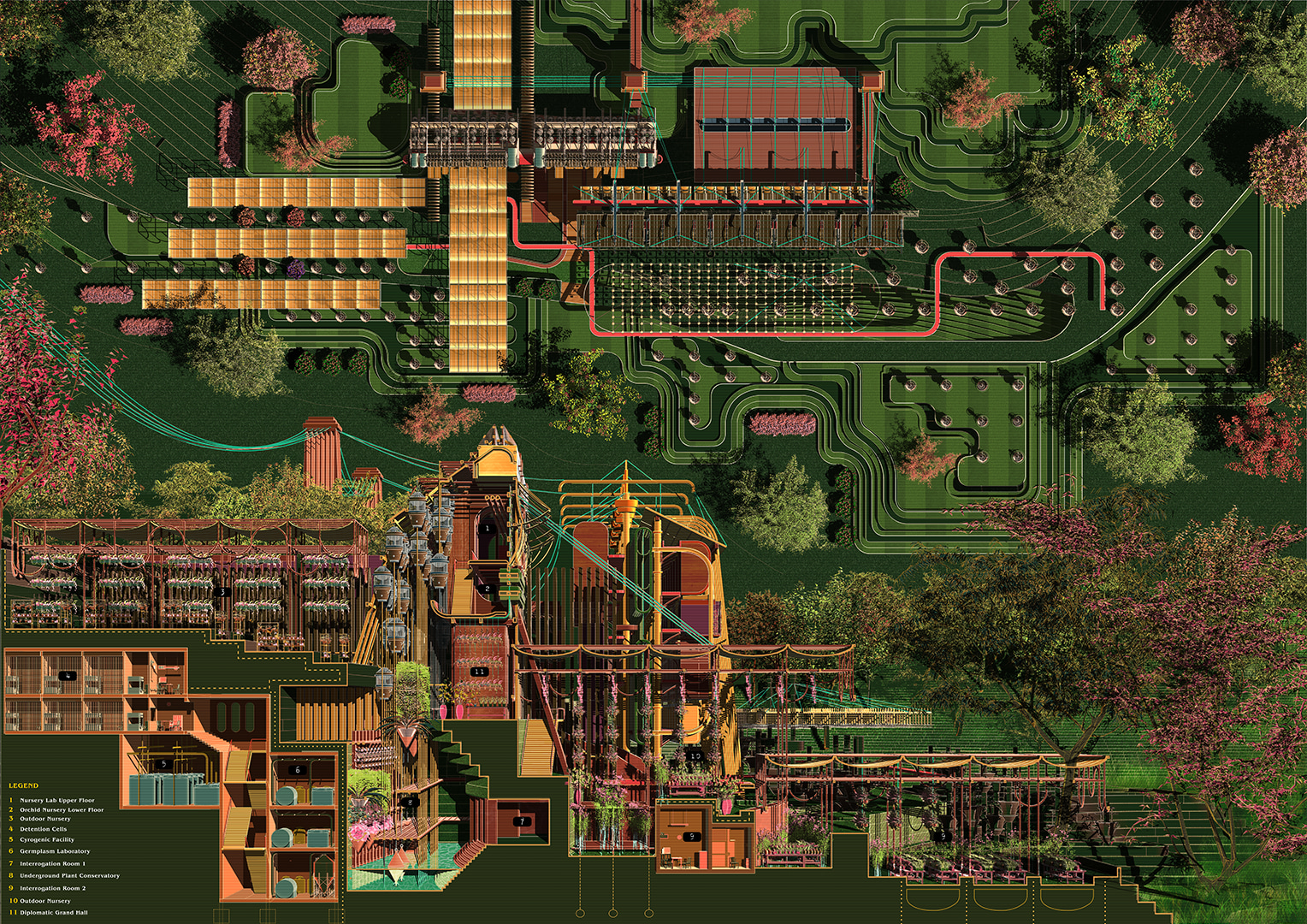
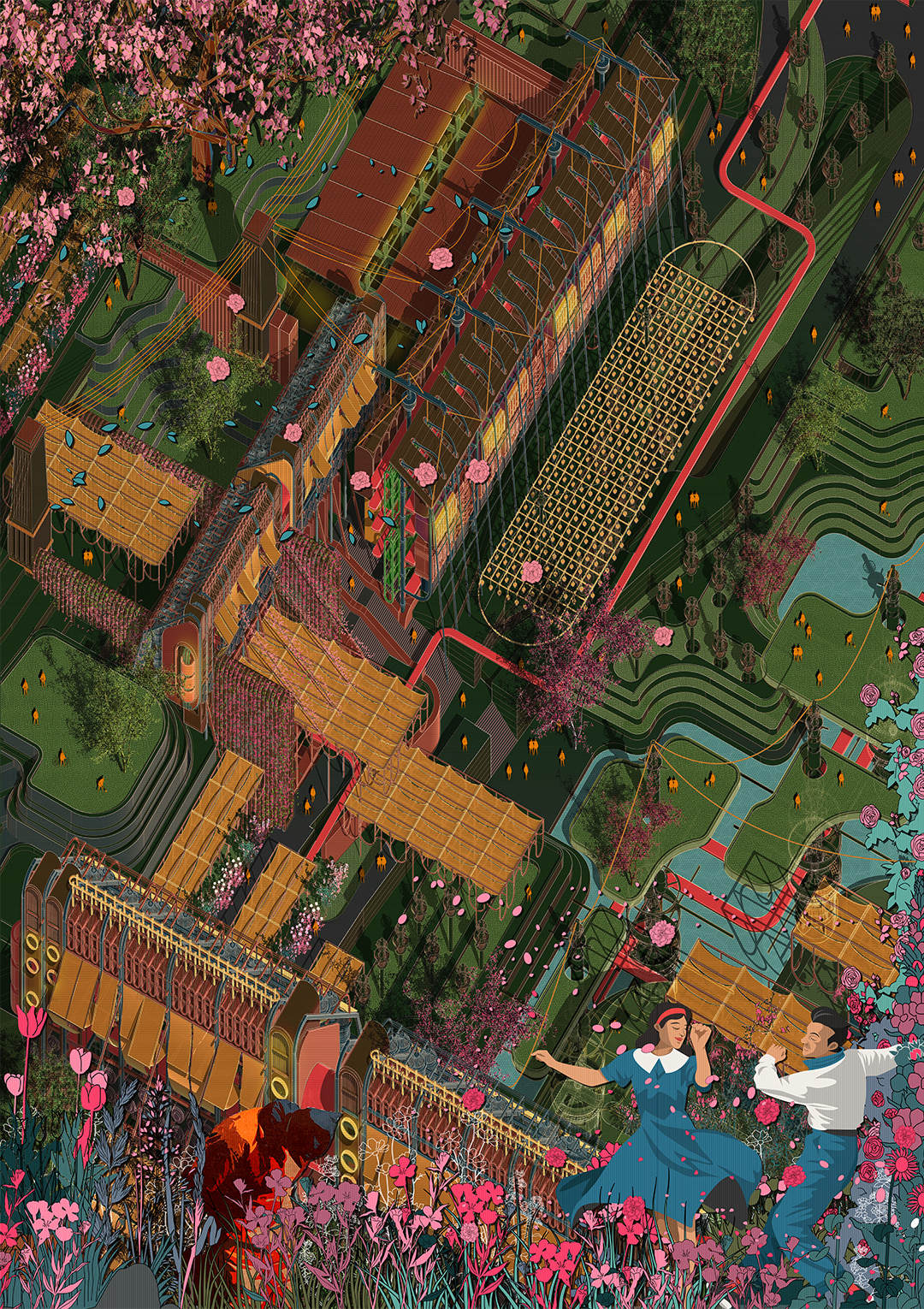

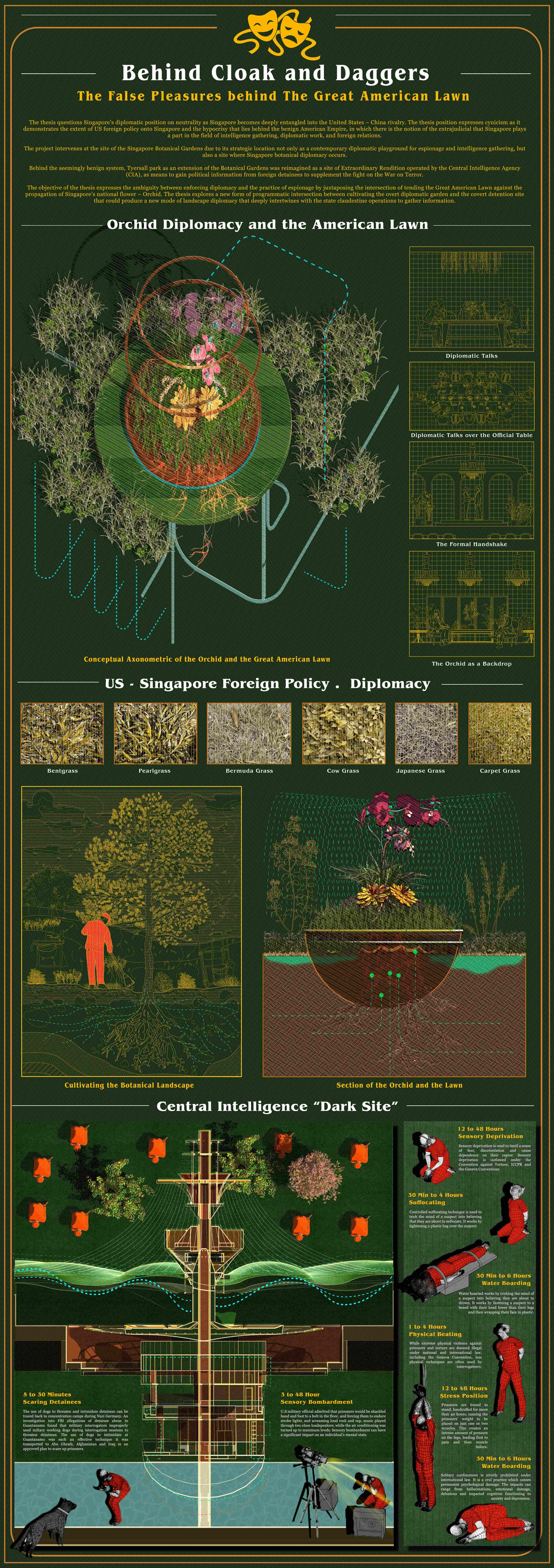
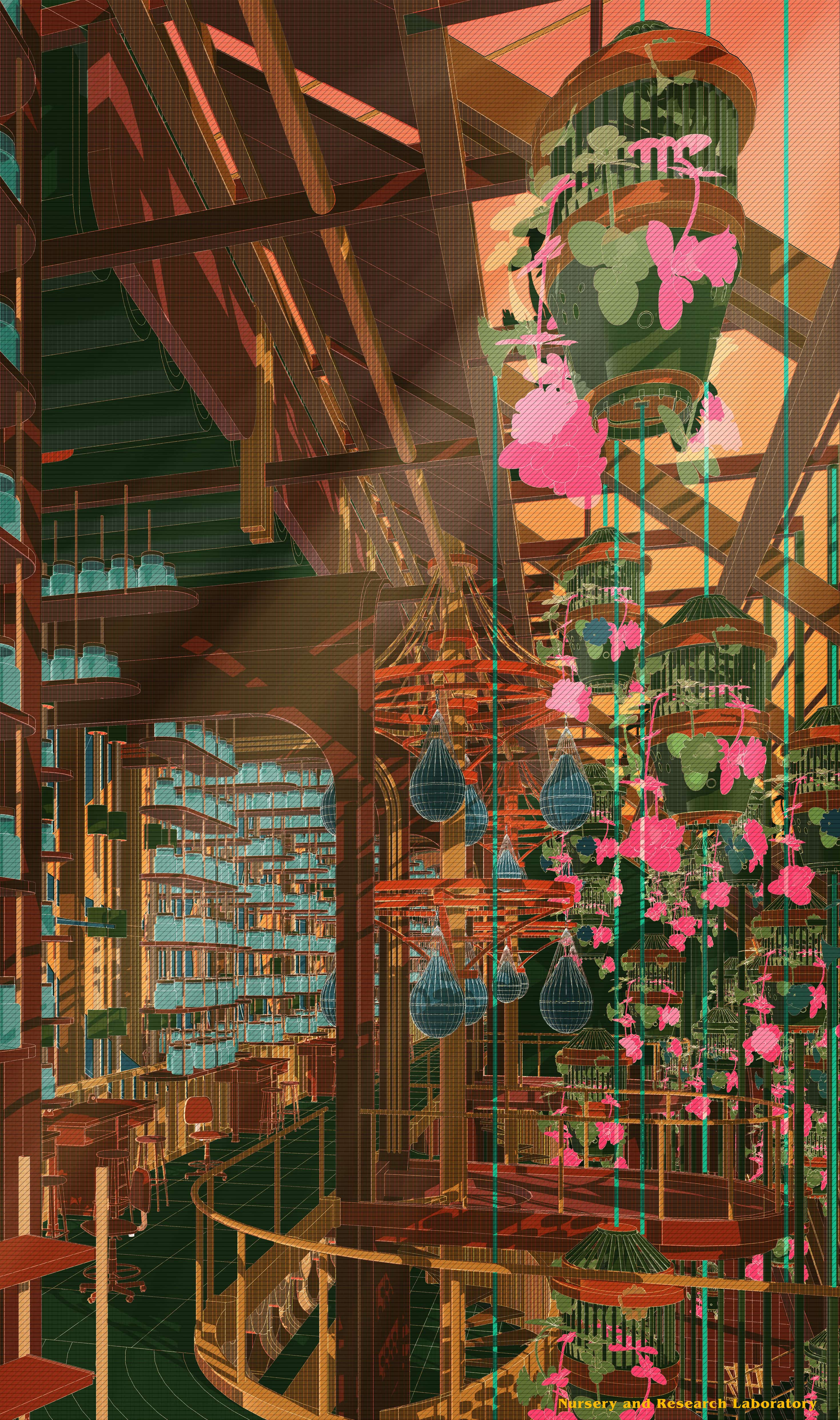
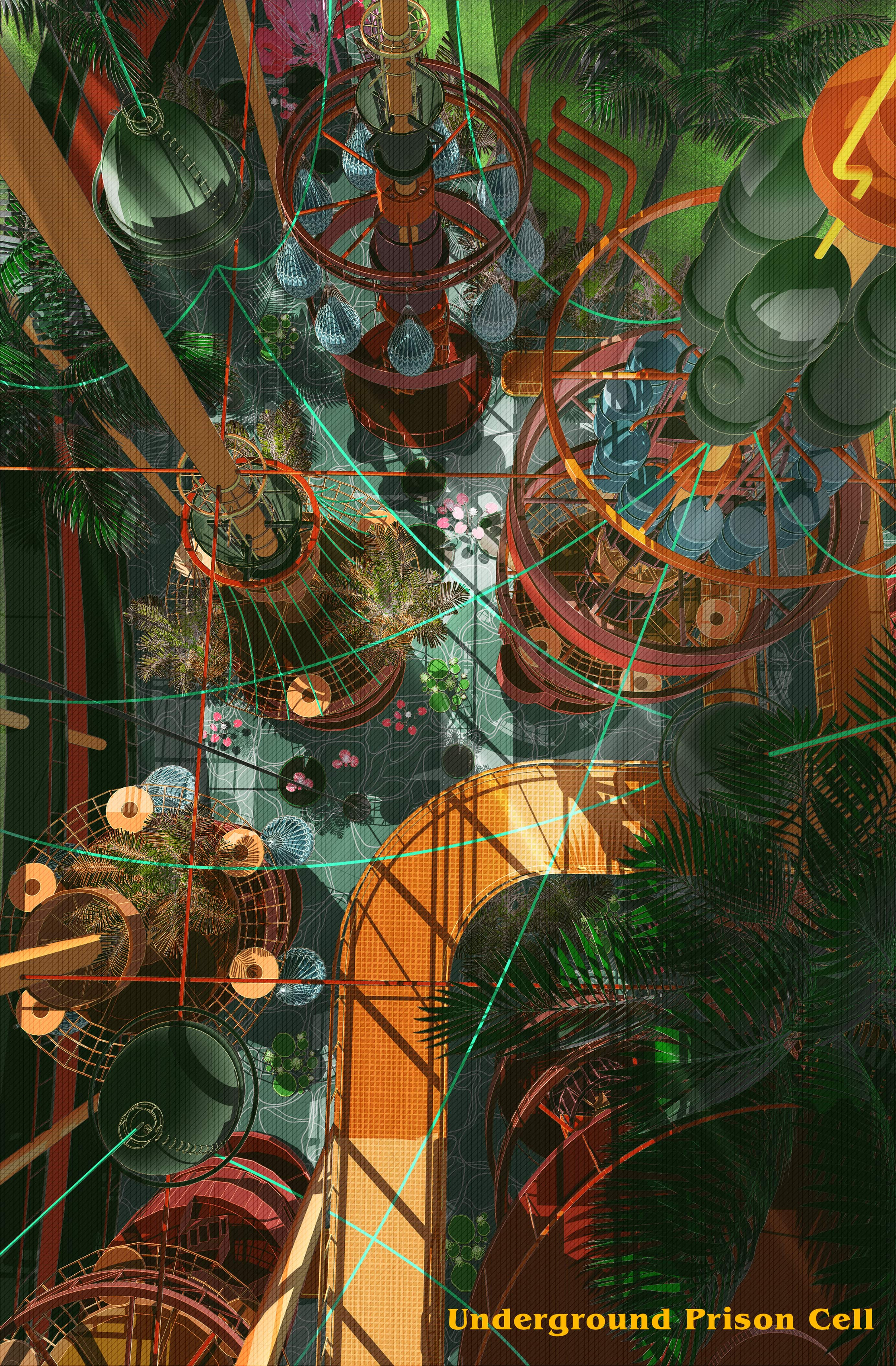
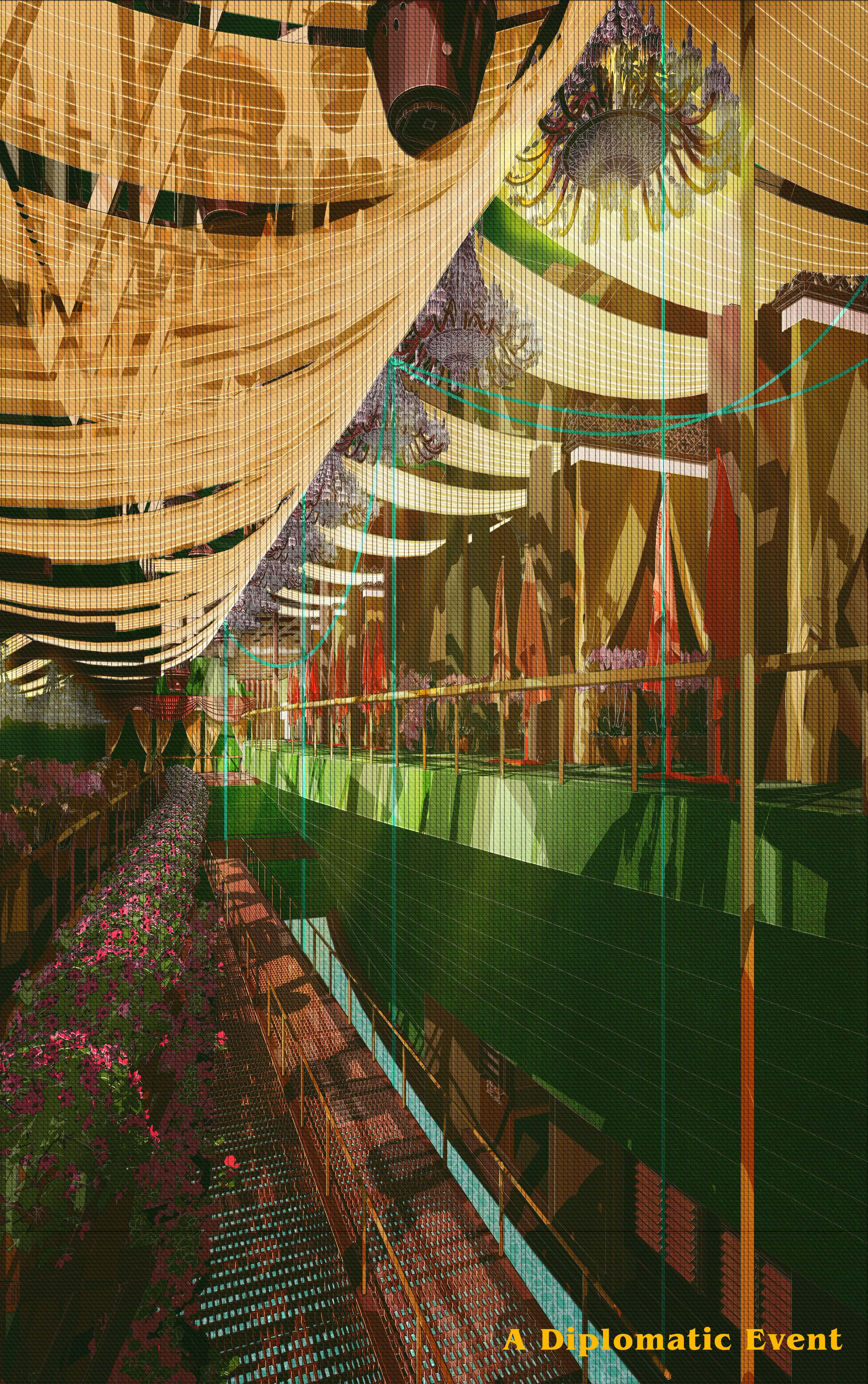

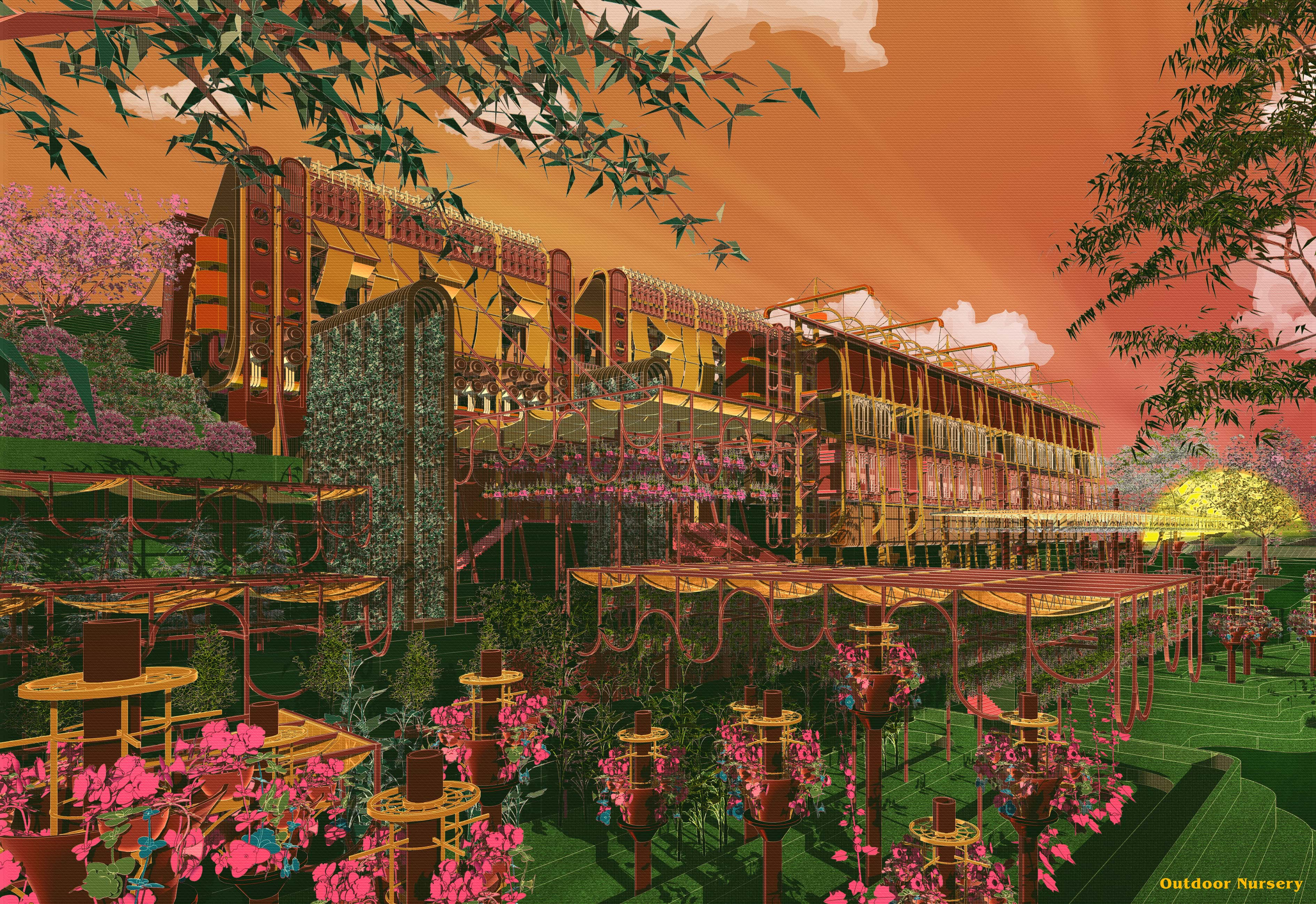










Behind Cloak and Daggers - The False Pleasures Behind the Great American Lawn
新加坡 / singapore
吳嘉輝 / GOH, Kar-Hui
隨著新加坡深深地捲入美中競爭,該設計旨在質疑新加坡在中立問題上的外交立場。設計表達了憤世嫉俗的態度,其中存在新加坡在情報收集,外交工作領域發揮作用的法外觀念,和對外關係。
該設計以新加坡植物園為基地,因為它的戰略位置不僅是當代間諜和情報收集的外交場所,也是新加坡”植物外交”發生的地點。
在看似良性的系統背後,作為植物園延伸的泰爾索爾公園被重新構想為中央情報局(CIA)運營的特殊引渡場所,作為從外國被拘留者那裡獲取政治信息以補充抗戰鬥爭的恐怖手段。
該設計的目的是通過將Great American Lawn與Singapore’s national flower – Orchid的傳播並列的交叉點來表達執行外交與間諜活動之間的模糊性。設計探討了公開外交花園和隱蔽拘留場所之間一種新的交叉規劃形式,從而產生一種與國家秘密行動深度交織來收集有價值信息的景觀外交新模式。
More Projects of this Session
展區其他作品
| The urgency of this thesis is to question the current village rejuvenation approaches consisting of fast, ‘one-off’ interventions intended to create something new atop an already existing site or conditions. Those interventions neglect the role of duration since both the site conditions and design interventions may change due to climatic forces and users’ situations. Therefore, the project envisages there is never a completion date of architectural interventions by architects and users. The thesis challenges the design period by proposing consistent seasonal workshops as a looping cycle in a village. Through observation of people’s living habits and changing site conditions, architects would constantly alter the design. The project would demonstrate a chronological narrative of a series of micro-interventions showing the cumulative impact on the evolution of a community and preservation of the landscape. |
|
| 作品說明Description (1000word) | |
| Shap Long Village in Chi Ma Wan, Lantau Island is a post-agricultural coastal village with an aging population. It begins being surrounded by new three-story bungalows. The outdoor living habits of the landscape community, which are subjected to tidal and seasonal changes, can be revealed from their living environment. In the village, we met Granny Fa, an 80-year-old villager who is passionate about fashion design. She repaired one of her houses destroyed by typhoon Mangkut with bedsheets and scarves. Now living in Kowloon, she returns here several times a year, especially at festivals to change her house and garden decorations such as replacing the facade fabrics. During site visits in distinct seasons, a village sample catalog has been prepared and kept updated. The design would adapt these samples as tools and materials. The seasonal site conditions and villagers’ activities are the main agents to initiate and anticipate the faith of each design. This project positions the architect as workshop curators to work on a site through rounds of careful observation, intervention, and supervision to respond to a rapidly changing rural environment. It also positions the general public as workshop participants who can contribute to and learn from the village instead of tourists who only sightsee. 1 The seasonal landscape workshop begins… Spring came, the villagers just finished their Lunar New Year celebrations at the theatre. It remains idle in other seasons. We would like to transform it into a storytelling place. Extra fabrics are collected from Granny Fa and other villagers. Together we collaborate on the needlework of patchwork quilts and hang up these pieces. Participants are invited to explore the village stories and ecologies. Projecting their photos taken in the village, they can share stories with each other. After having some understanding of the village, they are invited to join the upcoming workshops. The theatre becomes a temporary place for us to stay during the event. 2 In summer, the bay becomes smelly since changing sea wind directions and tides wash dead fish and trash onshore. We met an old villager who is running the tuck shop. He explained he was cleaning the bay by clipping the fish, covering them with sand, and recycling the energy to the crabs on the beach. We would like to assemble a collection cart with a few small boats unused on the bay for cleaning the bay. Participants would join the old man in cleaning the bay together by burying the fish for energy recycling to crabs. Waste can be sorted into the nets on the cart. When cleaning is finished, the boat is returned to the fisherman. The structure can be a small shelter or a food-drying rack. 3 In autumn, the summer holiday is over. The kids used to run to the pier for school in the morning. Unfortunately, the bridge collapsed during the typhoon Mangkhut. We promised them to build a new connection. Applying instant materials for molds, concrete mixed with gravel, sand, and shell aggregate from the beach can be cast layer by layer. Placing the cast stepping stones on the riverbed, they can run along this new ‘bridge’! Some villagers store their boats in the inner bay, they could cross the river with boats by moving the bamboo plate. 4 We usually access the village by ferry with sparse schedules. It is one of the stops of the Inter Islands route plying between Peng Chau, Mui Wo, and Cheung Chau. At the pier, some passengers are waiting for the ferry; some villagers are returning home, and some visitors are fishing and cooking. Referencing their activities and objects, we designed a pier terminal for them. A firepit is a center for cooking and staying warm in winter. After erecting steel rods and racks around the fire, our work is finished, remaining blankless for inhabitants. They are encouraged by the architecture to aestheticize and curate their lifestyle. They share seasonal fruits, cook meals, and exchange books and items from the other three rural areas and islands. The terminal transforms constantly. 5 In 2nd Year, with the coming of spring, the storytelling theatre shifted back to a stage for New Year celebrations. We add storage under the stage for keeping props and materials for changing programs. 6 Unluckily, typhoon Mango hit Hong Kong in summer, with a strong typhoon signal being in force for 10 hours. Half of Granny Fa’s fabric house completely collapsed. Thankfully her other house for storage of crafts was safe. She loves doing handicrafts and displays them at windows and garden. She is also a collector of window frames, oil paintings, etc. Making use of the frames from her collection and from the neighbor dismantled after the typhoon, we tried to rebuild her house. Associated with interior and exterior space, the frames serve for displaying her ongoing craftworks, providing bay window seats, and framing the garden view. This house of windows changes constantly as she keeps fixing and creating. 7 Before the school year started in autumn, the kids asked for help again. After typhoon Mango, the stone at shore paved by Granny’s husband gradually collapsed. We learned from the villagers: protect the coastal edge with a net tree plot filled with empty shells and clams. Likewise, we made net bags filled with shells from food waste protecting the shoreline. It also becomes an inhabitable place for coastal species. 8 We noticed that more people spent time at the pier. We assembled a raft extension at the unactivated side of the pier as the ferry only stops on the opposite side. Fishermen and visitors can use extended ground, or go to the lower floor of the floating platforms and borrow the boats. 9 Before spring comes, the village head suddenly decided to dismantle the decaying steel theatre! After discussion, we assemble a bamboo theatre for the new year celebration. Some of us collect palm thatch and weave them for roofing. It turns into a pavilion when the structure is not for a stage play. This incomplete project is to be continued… 10 We hope this project provides an alternative method for village rejuvenation projects, for archiving the hidden archaeology of present times, highlighting the distinct environments and concerns of these villages, protecting their shared cultures, as well as fostering connections and exchange between the rural and urban in a cumulative manner. |
|
